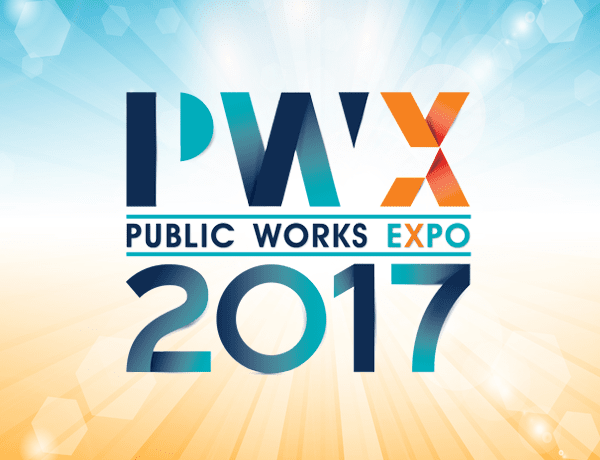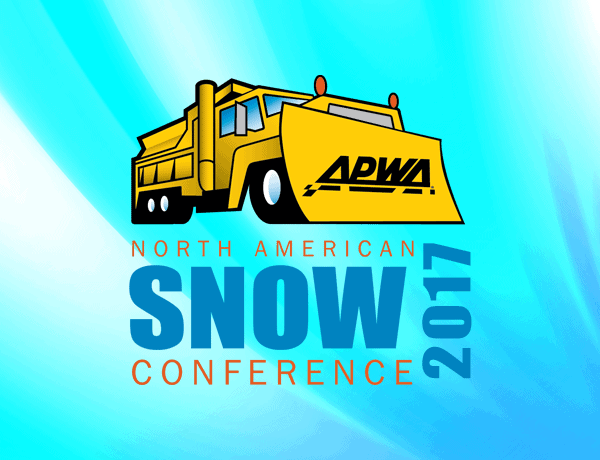Video
Facilitated
by Thom Singer, the Conference Catalyst and Emcee
Join Thom for a fun conversation about what you’ve learned so far at PWX,
the best take-aways you’ll be sharing upon your return home, and your
thoughts for topics and formats for the 2018 PWX.
This session will detail how the City of Farmington Hills planned, budgeted & built a state-of-the-art brine production facility, including liquid storage & distribution system. This facility is used to…
Read MoreFollowing a challenging winter season in 2015-2106, the City of Omaha, Nebraska recognized the need to update its winter maintenance operations plan to be relevant in terms of actual operational…
Read MorePublic Works is a primary emergency responder. When disasters and emergencies occur, Public Works maintenance operations personnel are among the first to respond. Though the primary responsibility is clearing roadways so that other responders can access stricken areas, Public Works also provides traffic control, debris management and assists with rescue, evacuation, damage assessment, infrastructure repair, and restoration of certain services. The national focus in now on building Resiliency, particularly through Critical Infrastructure Protection. Public Works is a major ""owner/operator"" of the transportation, water/ waste water and storm-water systems that are so vital for the safety and health of communities. Though the Homeland Security Department considers Public Works as part of the Emergency Services Sector, overall acceptance and recognition by other disciplines as equal partners in emergency management is still lacking. To overcome this, Public Works must first raise awareness within its own discipline that this is as important as design, construction, operation and maintenance of infrastructure. Public Works is extensively involved in prevention, mitigation, response and, most importantly, recovery. Besides maintenance operations field staff, engineers, planners, technicians, mechanics and administrative support from all divisions of a Public Works agency and related departments need to be aware of their roles as well. All incidents are local and the vast majority are caused by natural occurrences. Many do not reach the thresholds to qualify for state or federal assistance. Even if they do, local agencies are expected to handle the emergency for the first 72 hours. This presentation by a panel of public works subject matter experts will examine what agencies should do to have the resources, training, policies, and procedures to be ready and responsive for all-hazards incidents. It will also describe the definitive responsibilities and unique capabilities of Public Works in emergencies and planned special events. Our discipline must have a ""seat at the table"" with police, fire and public health when it comes to planning, training, exercising and actual management of incidents.Learning Objectives: Recognize the evolving role of Public Works in local and national emergency management.Assess your agency's current capabilities to deal with all -hazards incidents including extreme weather.Determine what training, equipping and planning is needed to improve your agency's readiness to respond to and recover from all types and levels of emergency situations.
Read MoreThe United States is spending only 2.4% of GDP on transportation and water infrastructure compared to an average 4% in Europe and 9% in China. Much of the nation's water and sanitary sewer infrastructure is nearing the end of its useful life and will require billions of dollars of investment over the next 20 years. The dilemma for water and sewer utilities is how to raise revenues to meet the current and impending needs. Raising rates will require a considerable amount of political will. The City of Brooklyn Park, Minnesota, developed an effective program for disseminating information to the city council, local businesses, and the public; and in the end, won approval for a $25 million infrastructure improvement plan.Learning Objectives: Communicate infrastructure funding needs in easily understandable terms.Attain community involvement by partnering with groups like the Rotary Club, veterans organizations, and business leaders to be advocates for the necessary rate increases.Take advantage of the programs and results achieved by other cities in setting up your community's plan to address infrastructure funding.
Read MoreDon't miss this exploration into how to implement, plan, and conduct a facilities condition assessment (FCA). You will hear firsthand about Sumter County, Florida's experience with the process. They will share the criteria used for selecting a contractor, discuss how to prioritize which facilities/buildings need to addressed first, and describe how they were able to use the collected data for useful budgetary planning.Learning Objectives:Develop a plan of attack in mapping out and prioritizing the process.Evaluate the credentials of contractors to do the facility condition assessments.Use the final delivered report as a ""go-to"" reference to continue improving the operational condition of facilities for years to come.
Read MoreIt had been 50 years since a major hurricane hit Northeast Florida, but in October 2016, Hurricane Matthew brought damaging winds and flooding to St. Augustine and nearby cities. This session will provide an overview of the storm, its impact on the city, and a candid assessment and lessons learned throughout the event and restoration efforts. Focus will be given to the issues faced by smaller cities with limited resources and broader span of control. Learn from their experiences and take away valuable lessons about how to better prepare for when disaster occurs in your community.Learning Objectives:Assess and compare the preparation, response, and restoration efforts of small cities in Northeast Florida.Identify and evaluate how these experiences can be related to situations and conditions in your own community.Discuss practices and recommend procedures that are successful in hurricane response, including coordinaton with federal, state, and local relief and response agencies.
Read MoreAPWA's Facilities and Grounds Committee has planned an in-depth exploration into management systems and approaches. Among the topics to be covered are:Overview of Building Management SystemsThis session will focus on the various building management systems as they pertain to security, life safety and facility operations and how each one plays a critical role in maintaining the overall functionality of the structure. Some of these systems are easy to forget until such time they cease to operate.Learning Objectives:Recognize that there are many different building management systems that impact the overall functionality of the structureExamine their own maintenance activities to ensure that all of their building systems are being evaluated and not overlookedDevelop a more comprehensive operational maintenance plan for each of their facilitiesEffective Leadership in Facilities ManagementThis training will give an overview of what Effective Management from the point of a Facilities Manager should look like It will be an overview of what skills are needed to effectively manage employees, contractors, and how to deal with an elected body.Learning Objectives:To gain a better understanding of how to manage employees fairly and effectivelyTo have a better understanding of what type of a relationship is needed to manage the contractors we hireTo better define the relationship with the elected bwhitody, and what skills are needed to avoid the mine field The Value of a Maintenance Management PlansThis session will focus on the developing maintenance management plans (MMP) – Managing your Assets.Learning Objectives:Recognize that there are many assets that make up a maintenance management planCommunicate the importance of knowing and tracking all of your assetsManage the organization more efficiently and effectively Overview of Facilities Work Flow ManagementThis session will focus on developing a workflow management process, which includes work orders and work requests, database creation, and maintenance, establishing standards, custodial care, routine maintenance, and outsourcing. Some of these systems are easy to forget until such time they cease to operate.Learning Objectives:Recognize the various components and steps needed to create an effective workflow management planEvaluate various maintenance components to tailor a workflow management plan for each facility for which they have responsibilityDevelop a comprehensive workflow management plan for their overall department responsibilities Parks and Grounds Asset ManagementThis training will give an overview of inventory and asset management. It will discuss how to identify facilities and grounds as assets and provide insight on establishing priorities and standards.Learning Objectives:To gain a better understanding of how to identify assetsTo have a better understanding of establishing goals, priorities, and standardsTo better manage facilities and grounds by identifying potential problems and assigning tasks
Read MoreOne of the projects outlined in the City of Omaha, Nebraska's combined sewer overflow (CSO) long-term control plan crossed the Lauritzen Botanical Gardens, a living museum of unique four-season plant displays. The Gardens had been constructed over a closed, solid waste balefill. The combined sewer was located under the balefill more than 800-feet below grade. The weight from the balefill had crushed the existing combined sewers, allowing leachate into the sewer system. Additionally, the drainage system had failed, allowing stormwater to flow into the balefill. How did they solve this complex problem? They developed an innovative solution involving a pipe bridge over the balefill and using four types of trenchless construction.Learning Objectives: Determine how to evaluate various trenchless construction methods for sewer installations.Evaluate the use of auger cast displacement for crossing a landfill.Examine how a storm sewer can be designed to be a pipe bridge.
Read MoreAPWA's Fleet Services Committee has planned a very special learning opportunity for Fleet professionals. This program will consist of 4 separate presentations that will feature practical solutions on the issues facing Fleet departments in today's world. You may attend just those presentations that meet your immediate needs or join us for the full day of programming. If you are interested in obtaining CEU credit for those presentations that you attend, please see the volunteer monitors in the room and have your badge scanned after each presentation.Not all agencies use a fully-burdened shop rate when calculating charge-back rates. An experienced fleet professional will guide you through how to calculate service rates for repairs and how to determine shop staffing levels.Learning Objectives:Identify how to calculate charge-back rates.Better determine shop staff levels using a fully-burdened shop rate.Discuss the benefits of using a fully-burdened shop rate.
Read More
